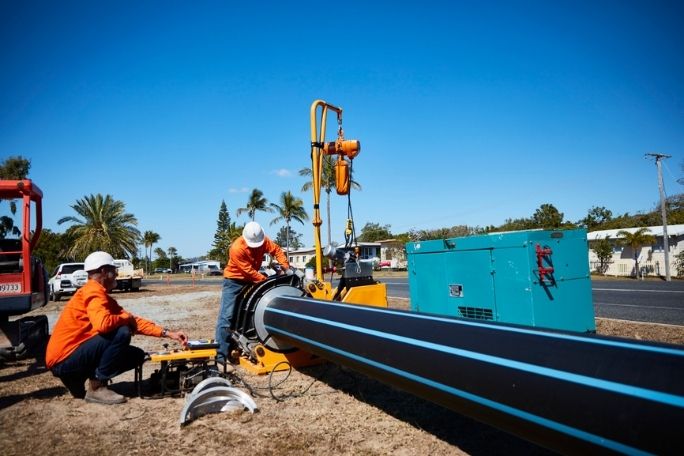Lesson summary
Students demonstrate an understanding of the competing considerations influencing material designers during a design process by listing the diverse range of requirements of useable and sustainable pipes.
Students will...
- explain how people in design and technologies occupations consider competing factors, including sustainability in the design of products
- understand the key criteria required for designing a sustainable pipe.
Success criteria:
Students can...
- list the diverse range of requirements of useable and sustainable pipes
- create a rubric.
Lesson guides and printables
Curriculum links
Select your curriculum from the options below.
Lesson details
Curriculum mapping
Australian Curriculum (v9.0) content descriptions:
Year 5 & 6 Design and Technologies:
Students learn to:
- negotiate design criteria including sustainability to evaluate design ideas, processes and solutions (AC9TDE6P04).
General capabilities: Literacy, Critical and Creative Thinking.
Syllabus outcomes: ST3-2DP-T, ST3-3DP-T.
Cross-curriculum priority: Sustainability.
Relevant parts of Year 5 & 6 Design and Technologies achievement standards:
Students explain how people design products to meet the needs of communities, including sustainability. Students select and justify design ideas and solutions against design criteria that include sustainability.
Level of teacher scaffolding: Medium - facilitate class discussion and activity, oversee group tasks.
Skills
This lesson is designed to build students’ competencies in the following skills:
- creative thinking
- critical thinking
- problem-solving
UN Sustainable Development Goals
UN SDG 6: Clean water and sanitation
Target 6.2: By 2030, achieve access to adequate and equitable sanitation and hygiene for all and end open defecation, paying special attention to the needs of women and girls and those in vulnerable situations.
UN SDG 12: Ensure sustainable consumption and production patterns
Target 12.5: By 2030, substantially reduce waste generation through prevention, reduction, recycling and reuse.
Resources required
- Art supplies - coloured pens and paper
- Device capable of sharing an image with the class
- Optional: About the Linear Economy and Circular Economy - Presentation
- Optional: House with Pipes - Image
- Student worksheet - one copy for each student
- Writing supplies
Additional info
Special thanks to:
Plastics Industry Pipe Association of Australia (PIPA) is a non-profit association that is committed to future-focused leadership. Through research, education, technical expertise and advocacy, they help advance the use of plastic pipes and fittings as a smart, efficient and sustainable solution.
Related professional learning
Visualise Data in the Primary Classroom
Quick summary: In this hands-on course, you will build your ability to use infographics as a learning tool in your curriculum. You’ll discover how to understand infographics and create your own.


Welcome back!
Don't have an account yet?
Log in with:
Create your free Cool.org account.
Many of our resources are free, with an option to upgrade to Cool+ for premium content.
Already have an account?
Sign up with:
By signing up you accept Cool.org's Terms and Conditions(Opens in new tab) and Privacy Policy(Opens in new tab).